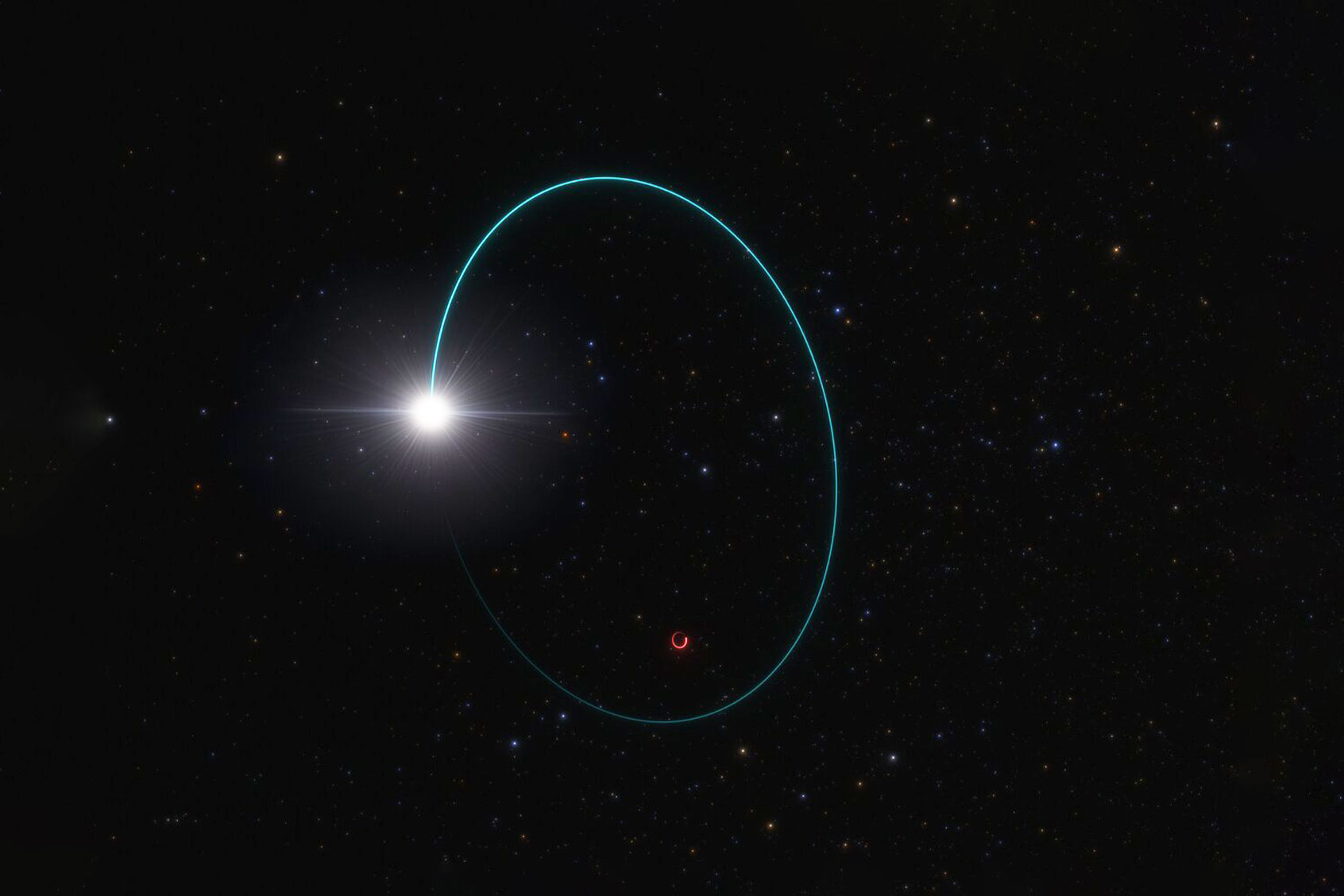The biggest stellar black hole ever seen in the Milky Way galaxy has just been discovered by a collaboration of astronomers — and it's the second-closest one to us, parked just 2,000 light-years away. Published in the journal Astronomy & Astrophysics today, researchers describe how their discovery, now named Gaia BH3 (or BH3, for short) was thanks to the "wobbling" wink of a companion star orbiting the black hole.
BH3, it should be noted, is not supermassive — thus not the most "massive" (in technical terms) in the galaxy. That would be Sagittarius A*, the supermassive black hole at the center of the Milky Way whose mass is about 4 million times that of the sun. BH3, on the other hand, is the most massive in its category of stellar black holes, which were created by the collapse of a star. The discovery promises to let astrophysicists study whether and how this nearby astronomical powerhouse may be pulling in matter from its surroundings.
“No one was expecting to find a high-mass black hole lurking nearby, undetected so far,” lead author Pasquale Panuzzo said in a Tuesday release. Panuzzo is an astronomer at the Observatoire de Paris, part of France's National Centre for Scientific Research, and a member of the collaboration of researchers working with data from the European Space Agency’s Gaia mission. It was in this data pool that the researchers spotted the strange pattern of BH3's companion star. Analyzing the pattern further, they realized the star was wobbling as if something were affecting its orbit. The impact soon became clear — and Gaia collaborators quickly mapped out the edges of their discovery.
"This is the kind of discovery you make once in your research life," Panuzzo said. To verify the findings, Gaia collaborators looked to an array of international astronomy data pools at other ground-based observatories — including the Ultraviolet and Visual Echelle Spectrograph instrument on ESO’s VLT in Chile, the HERMES spectrograph at the Mercator Telescope in Spain, the University of Geneva Observatory, and the SOPHIE high-precision spectrograph at the Observatoire de Haute-Provence in France.
“We took the exceptional step of publishing this paper based on preliminary data ahead of the forthcoming Gaia release because of the unique nature of the discovery,” said co-author and Gaia collaboration member Elisabetta Caffau from the CNRS Observatoire de Paris. Caffau said an early public release on the data will let astronomers start studying BH3 right away. The team will also release the fuller data set in late 2025 at the earliest.


